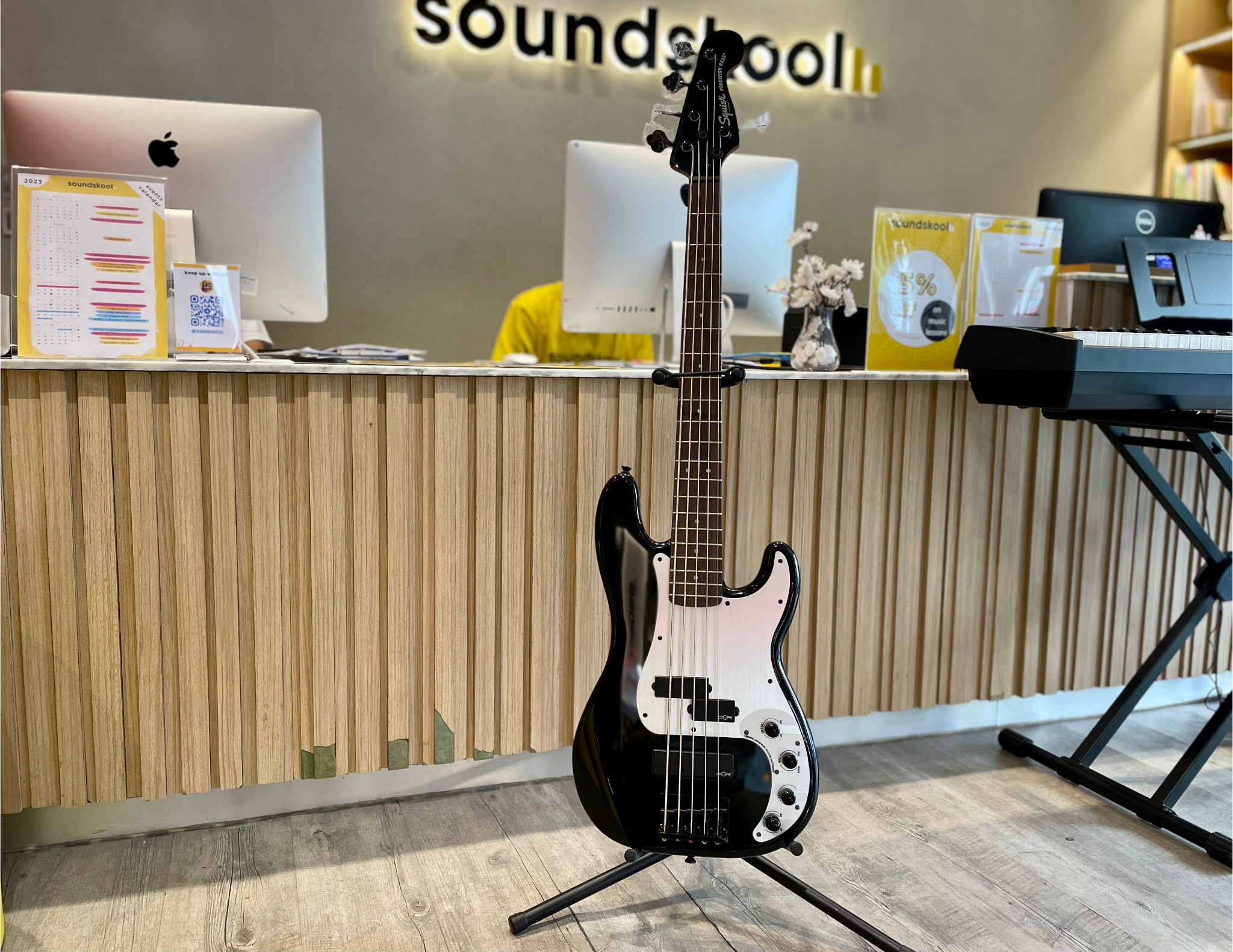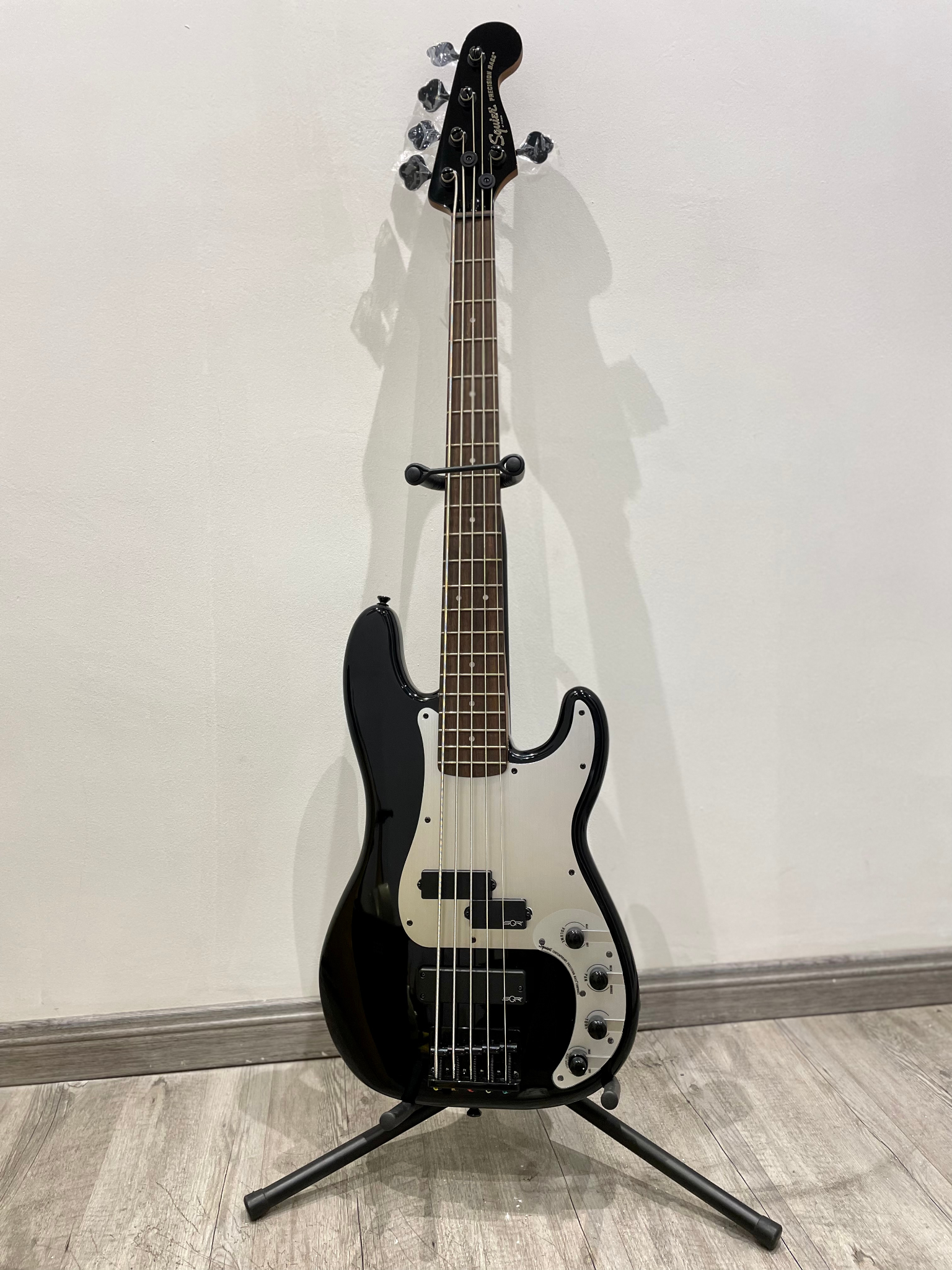Bass Guitar Buying Guide for Beginners
Playing bass guitar is a thrilling journey. However, purchasing your first bass guitar can be just as exhilarating. To ensure that you make an informed decision, this article will help you consider all the factors involved in choosing the right instrument for you.

If you're in the market for a bass guitar, and it is your first time making the purchase, there are a few key things to keep in mind to ensure that you choose the right one for your needs. With so many types of bass guitars available, selecting the perfect instrument can be a daunting task. That's why it's essential to understand the different types of basses that exist, the factors that determine size, and the essential items you'll need to start playing.
Playing bass guitar is a thrilling journey that involves developing your skills, experimenting with new techniques, and creating unique basslines. However, purchasing your first bass guitar can be just as exhilarating.
To ensure that you make an informed decision, this article will help you consider all the factors involved in choosing the right instrument for you. We'll go over different types of bass guitars that exist, the strings number of your bass, the instrument's tonewood, playability and size.
But before going over to all these relevant points, let's first learn about different parts of the instrument.
The Anatomy of a Bass Guitar
Before purchasing your first bass guitar, it’s important to familiarize yourself with the anatomy of your instrument. This can help you develop a better understanding of your bass guitar as well as communicate with other bass players.

There are three main parts of your bass guitar that contains some other components of the instrument.
Body
- Bridge & String saddles - This is where your strings rest and are anchored to the bottom of your bass.
- Pickups - “pick up” the vibration of the strings and turn them into an electric signal transmitted through an amp.
- Volume and Tone knobs - These separate knobs control the sound of your bass.
- Pickguard - This is a section of laminated material that protects your bass from getting scratched by the pick.
- Output jack - Your output cord plugs into this jack. From there, you’d plug the other end into your amp.
- Strap buttons - There is a strap button at the bottom of your bass guitar and another near the top part of the body.
Headstock
- Tuning pegs can be turned to tighten or loosen the strings of your bass guitar.
- String tree, which holds your strings down.
Different Types of Bass Guitars
There are different types of bass guitars, just like there are different types of regular guitars. The two main types of bass guitars are electric and acoustic. Electric bass guitars have more options to choose from, such as solid-body and semi-hollow body basses. Let's learn more about these types of bass guitars.

Electric Bass Guitars
Before the Fender Precision Bass was invented by Leo Fender in 1951, bass players had to play big and heavy upright basses. Leo Fender changed that by creating an electric bass that was smaller and could produce powerful sounds just like a guitar.

The electric bass played a significant role in defining the sound of early rock n' roll, rockabilly, and country music in the 1950s. Today, the electric bass is still a popular instrument used in various music genres such as funk, rock, metal, pop, and country.
Take a look at a few points listed below, if they are something you consider then you might want to lean toward playing an electric bass:
Multiple Sizes
Electric basses are available in both a standard (long) scale and a short scale size, giving players of all ages and sizes more flexibility to find an instrument that works with their unique physiology.
Different Styles/Sounds
From solid body electric basses to semi-hollow body basses that give you the best of both acoustic and electric worlds, electric basses offer players a variety of tones.
Amplification
An electric bass produces a big, booming sound. Its ability to be amplified allows you to play quietly during a practice session, keeping your amp tuned low -- or to crank the volume when you’re ready to play live.
Fits with Many Genres
While the electric bass has its roots in early rock n’ roll and rockabilly, to this day, the electric bass remains a staple of funk, rock, metal, the blues, and country. If you’re a fan of any (or all!) of these styles of music, the electric bass can be a gateway to unlocking a whole new level of appreciation for the music you love.
Acoustic Bass Guitars
Acoustic bass guitars look like regular acoustic guitars and have a similar hollow body and sound hole. They make low-pitched sounds like electric bass guitars but have a quieter and softer tone. You can hear them more often in relaxed music like folk and world music. They are not as common as electric bass guitars. However, they are more challenging to play for beginners because they have a thicker neck than electric bass guitars. Acoustic basses may not be suitable for playing loud and rhythm-driven music like funk and rock because they have a gentle sound.

You should consider an acoustic bass your choice if you like:
Keep It Simple
With an acoustic bass, you don’t have to worry about plugging into an amp, although there are some electrified acoustic basses available.
A Unique Sound
The role of the bass in a song is to provide the rhythm of a song. While the bass is often an unsung hero of a band, an acoustic bass lends a different sound to a song. An acoustic bass still has that powerful low-end, but it’s less in-your-face as an electric and works well with genres like folk, world, and possibly even blues.
Different Stringed-Bass Guitars
Electric bass guitars usually have four strings, but there are also five-string and six-string models. These bass guitars with more strings can produce a wider range of notes and are commonly used in heavy metal, hard rock, fusion, and jazz music. However, they may not be the best choice for beginners because they have a thicker and wider neck, which makes them harder to play.

If you are a beginner, it's best to start with a four-string bass guitar. Learning to play on a four-string bass allows you to learn the basics first, and most songs are written for four-string bass guitars. The neck of a four-string bass is also thinner and easier to handle than a five- or six-string bass. Once you have mastered playing on a four-string bass, you can then move on to the more challenging five- and six-string bass guitars.

Instrument's Tonewoods
Tone is important in playing bass. The sound produced by bass adds to the music, providing a low-end rumble that sets the rhythm of a song. The type of wood that the bass guitar is made of affects its sound. As a beginner, you don't have to worry too much about tonewoods. But if you're looking to buy a second or third bass, knowing the different types of tonewoods and how they impact your sound can be helpful.

Ash and Alder
Ash and alder are both commonly used tonewoods for Stratocaster guitars. Swamp Ash and Northern Hard Ash are the two varieties of ash wood, and swamp ash was widely used to create Fender instruments during the 1950s and 1960s. Ash has a bright tone with some snap and long sustain. Alder, on the other hand, provides a rich tone with lots of warmth and low-end and is highly desired due to its lightweight nature.
Mahogany
Mahogany is a striking basswood with an open grain that lends itself to a variety of appearances. In terms of tone, it’s warm and full with a nice mid-range sound and sustain. Its tone makes it a popular choice of bass tonewood for jazz and blues players.
Basswood
Basswood has a tone similar to alder -- rich, with a good overall warmth -- although it’s easier to source for instruments made in Japan.
Maple
Maple has a bright tone with a bit of bite on the high end and great sustain. Due to the fact that maple is a very heavy wood, it’s rarely used to build an entire bass guitar body. Instead, it’s used just as a laminated top to create a striking tone. Due to its outstanding tonal properties. maple is one of several woods that is also used to construct fingerboards and the neck of many guitars and bass guitars, too.
Instrument's Playability
The neck of a bass guitar is an important factor in how comfortable it is to play. There are different shapes, contours, and profiles to consider. The radius of the fretboard affects playability, with flatter radius being better for playing fast. The shape and profile of the neck also matter and should be comfortable for your fingers and thumb. Frets should be properly dressed so that they are smooth to the touch. The feel of the back of the neck is also important, with a satin finish being preferable to a sticky one. A well-crafted bass guitar will feel good to play and avoid sharp frets.
Instrument's Size

If you feel comfortable playing your bass guitar, you will be more inclined to practice. Therefore, the size of the bass guitar is an important factor when choosing one. Since bass guitars come in various lengths, it's essential to determine which size suits you best. To figure out the perfect bass size for you, hold each bass in playing position while standing or sitting. Ensure your hand can reach the first fret comfortably, while your elbow remains relaxed and comfortable.
Long Scale Bass Guitar
The most common size for a bass guitar is 86.36 cm and it's called a long-scale bass. It was first introduced by Leo Fender in 1951 and is also known as a "standard scale bass." The majority of 5-string and 6-string basses are available in this size.
Short Scale Bass Guitar
A short-scale bass has a length of 30 cm, making it ideal for players with small hands. Despite its small size, it produces a rich and powerful sound due to the use of thicker strings.
After going through all the factors above, but you still need help choosing? Take a look at a few recommendations below. They are all best suited for beginners.

The Squier® Contemporary Active Precision Bass® PH V brings modern features and bold aesthetics to satisfy today’s most discerning and daring players. High-performance components with eye-catching styling cues along with chrome logos opt for a premium look.

Fender SILENT SIREN JAZZ BASS
Based on the custom American Standard Jazz Bass, the pickup is equipped with a V-mod Jazz bass, and it is finished in a high-quality base with the selection of specifications not only for looks but also for playability.

Fender HAMA OKAMOTO PRECISION BASS-OWT
A renewed model with the new color Olympic White, HAMA OKAMOTO is a Precision Bass that has a slim jazz-based neck shape that enables smooth playability
Visit Soundskool shops at Phnom Penh and Siem Reap to test out different models of Fender bass guitars. Or Visit our website by clicking here.
Find us in Phnom Penh and Siem Reap: Soundskool Toul Tom Poung, Toul Kork, and Siem Reap
Want to Learn How to Play Bass Guitar?
At Soundskool, we also offer music class for bass guitar as well as other music instruments. Interested to know more? Reach out to our school desk to inquire more about the programs. You can also register for the clas online by clicking here.
Direct message: Soundskool Toul Kork, Toul Tom Poung, Norodom, Siem Reap.
Soundskool, the only Fender's authorized distributor in Cambodia
Need help buying your first acoustic guitar? Click here to read some useful tips to help you choose.

